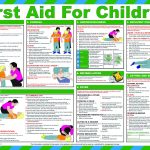First aid training provides the learner with essential skills to use in related careers and various life experiences.
For Army ROTC (Reserve Officer Training Corp) cadets, first aid training is even more applicable, as it focuses on tactical care.
The process varies according to the institution where cadets receive first aid training, but follows a set curriculum as established by the Army. In their first year, cadets learn about the role of the Army through its origins, traditions, customs, branches, operations, and tactics.
By sophomore year, cadets are ready to learn the role of an officer through communication, a code of conduct, principles of war, military operations/tactics, and first aid.
Battlefield Preparation
According to Marquette ROTC instructor and Iraq/Afghanistan veteran, Shawn Goggins, “This training replicates battlefield conditions and situations … it is very important they get a solid foundation they can build from.”
Training is usually an all day event, where information and scenarios are provided in the morning, and assessments for comprehension are conducted in the afternoon.
The intention of this training is to provide simulations that are as close to battlefield situations as possible.
This also means that ROTC cadets are taught life-sustaining techniques.
The objective becomes stopping the life-threatening aspect of an injury, rather than taking the time to fully treat it, because this would cause significant loss of time that soldiers do not have on the battlefield.
Carbon Monoxide
ROTC cadets are trained to assess situations according to risk, measuring the level of danger in relation to all affected parties. Potential minefield injuries and carbon monoxide, for example, exemplify extremely high risk.
In the case of carbon monoxide inhalation, the colorless and odorless gas presents signs through the patient’s actions and appearances.
Burns
One frequently practiced first aid simulation is burn care.
Cadets must first eliminate the source by covering their patient with any non-synthetic material and rolling them on the ground.
After that, cadets need to assess the patient and the location of their burns. Any located near the neck, nose, and mouth could lead to swelling of the airway, and breathing must be monitored as a result. Cadets continue to look in nose and mouth for carbon materials or singed hair.
Next, cadets remove any jewelry or accessories from hands and fingers. Then they can treat according to the degree of burn, with careful use of ice and cold compresses, and dressings if appropriate.
They are encouraged to avoid breaking blisters and the use of grease, ointment, or dressings on the face or genitalia.
Once preliminary assessments and treatments for the burns are made, cadets must seek medical help.
General
This systematic approach used for carbon monoxide and burn victims is the same followed by trained cadets in any first aid situation encountered. All first aid personnel can find himself or herself making a life or death situation on a battlefield.
For ROTC cadets, training that focuses on quick, but calculated actions is essential, as their decisions could determine not only the patient’s life, but also their own.
Other ROTC programs train using various simulations of environments that vary from the battlefield to a construction site, or even a peaceful stroll down a city street.
Controlling Blood Loss
Blood loss remains the greatest cause of death on a battlefield, as often there is not the opportunity or the manpower available to treat a soldier who is bleeding out.
As a result, cadets learn how to control bleeding through various wound wrapping methods and the use of tourniquets. These are devices used by compressing a cord or tight bandage around the exposed vein or artery that is the source of the extreme blood loss.
There are also bandages that incorporate anticoagulant solutions. These bandages are essentially stuffed into an open cut, and anywhere it touches will stop the bleeding.
In addition, ROTC cadets can use compression bandages that wrap twice around the area and attach with a clip to apply pressure on open wounds.
These items and various medicinal supplements are found in the ISAK medical kit used by soldiers. Cadets are instructed to first use the medical kit of the injured.
But, regardless of the method, ROTC cadets are reminded to use minimal, yet practical, actions to ensure the wounded can make it to a hospital.
Final Thoughts: Benefits of ROTC Cadet First Aid Training
As cadets receive supervised instruction, hands-on training, and evaluations from instructors, they are developing confidence in their ability to act appropriately and quickly to treat battlefield injuries.
Whether it is through the use of dummies, their fellow cadets, or a simulation that combines both, any instance of first aid training will prove to enhance the skills and capability of an ROTC cadet.


